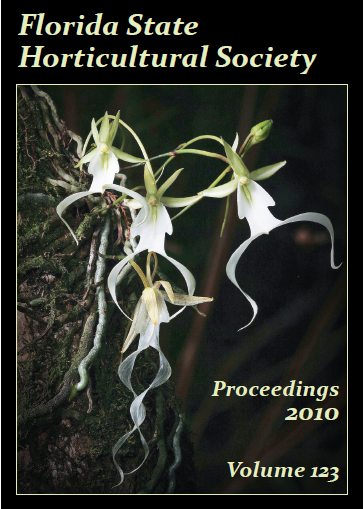Citrus
Abstract
Sweet orange cultivars account for approximately 80% of the total acreage of citrus in Florida. With the spread of huanglongbing (HLB) throughout the Florida citrus industry, yields of sweet orange have been affected. Research was initiated to examine the susceptibility of various commercial sweet orange cultivars to HLB. In greenhouse tests, most commercial sweet orange cultivars tested were found susceptible to graft inoculation with HLB-affected budwood. However, a high percentage of seedlings of a midseason cultivar continued to test PCR negative for Candidatus Liberibacter asiaticus (Ca. Las.) a full year after inoculation. The inoculum-containing budwood in all test plants sprouted, grew, and tested PCR positive for the bacterium assuring that the test plants were inoculated. Psyllid transmission tests to a limited number of the seedlings again produced results that numerous seedlings of the cultivar were not infected. This sweet orange cultivar may have some tolerance to Ca. Las. infection as compared to other sweet orange cultivars which are normally infected by graft inoculation in 3–4 months. The most important transmissions should be done using psyllids since this is the normal way of transmission in the field. Work is continuing on this cultivar grafted on various rootstocks.References
- Gottwald, T.R., J.H. Graham, and T.S. Schubert. 2002. Citrus canker: The pathogen and its impact. Online. Plant Health Progress doi:10.1094/PHP-2002-0812-01-RV.
- Halbert, S. 2005. The discovery of huanglongbing in Florida. In: Proc. 2nd Intl. Conf. Citrus Canker and Huanglongbing Res. Wkshp., Orlando, FL, p. 50.
- Li, W., D. Teixeira, J.S. Hartung, and L. Levy. 2006. Quantitative real time PCR for the detection and identification of Candidatus Liberibacter species associated with citrus huanglongbing by multiplex real-time pcr. J. Microbiol. Methods 66:104–115.
- Lopes, S.A. and G.F. Frare. 2008. Graft transmission and cultivar reaction of citrus to ‘Candidatus Liberibacter americanus’. Plant Dis. 92:21–24.

